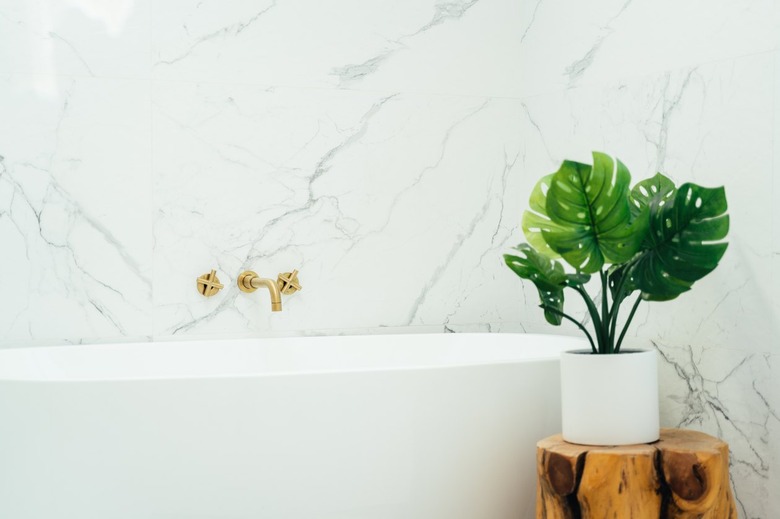How To Care For Monstera Plants
If they had a "sexiest houseplant on the planet" contest, it would be smart to bet money on the monstera plant (Monstera deliciosa). Its huge, shiny, voluptuous leaves are conspicuously cut with deep splits and elongated holes, and its popularity continues to soar. When one comes into your life, you're going to want to do right by the lush air plant to keep its sensual vibes flowing.
Meet the Monstera
In this context, the name "monstera" has nothing to do with monsters. The genus name, also doubling as the common name of the plant, refers to the giant foliage the plant family produces.
These are air plants, and in their native rain forest home, they grow as evergreen liana vines. Wild monsteras climb up to 70 feet and produce white flowers that develop into delicious fruit. (That's where the species name "delicious" comes from.) Since they are only hardy outdoors in USDA zones 10 and above, monsteras are mostly grown as houseplants in the United States, and what elegant houseplants they make.
As indoor container plants, they only grow 8 feet tall but offer multiple deep green leaves the size of T-shirts. Indoor plants rarely flower and fruit.
Grow a Monstera Plant
Given that monsteras are air plants, providing the right type of soil is important. Generally, air plants in the rain forest get their water from the humid, tropical air and their nutrients from falling leaves. To plant them outdoors, use a permeable soil rich in organic material.
For container plants, direct the aerial roots into a peat-based potting mix to provide structure as well as the excellent drainage monsteras require. Site the plant in a spot with relatively bright, indirect light and keep the temperature between 60 and 85 degrees Fahrenheit.
Bright, indirect light is what this plant requires indoors as well as adequate water. During the growing season of spring through early fall, keep the monstera's soil evenly moist. Come winter, only water after the soil has dried out considerably. Humidity is generally the biggest issue since monsteras prefer very humid air. You might try growing them in the bathroom, but alternatively, place a saucer of rocks and water beneath the plant and mist the leaves occasionally.
Care for a Monstera
Many plant lovers stop at basic monstera care and enjoy healthy, vital plants for years. However, there are other ways of nurturing this plant. One is fertilizer. Some monstera owners fertilize their indoor plants every month during spring and summer with a general, balanced, water-soluble fertilizer. If this appeals to you, use 1/2 teaspoon per 2 quarts of water for indoor plants.
What about pruning? No massive trimming endeavors will ever be required. It's best to prune in summer, removing the upper aerial roots. Don't prune out the lower roots but assist them to grow in the direction of soil. It's also possible to remove the ends of branches, trimming the stem to just above a leaf node.
Monsteras look healthy, and most of the time, they are. They attract few pests and fall prey to few diseases. If you notice bugs, like spider mites or mealybugs, wash them off with water or wipe them with wet, soapy cotton balls.
